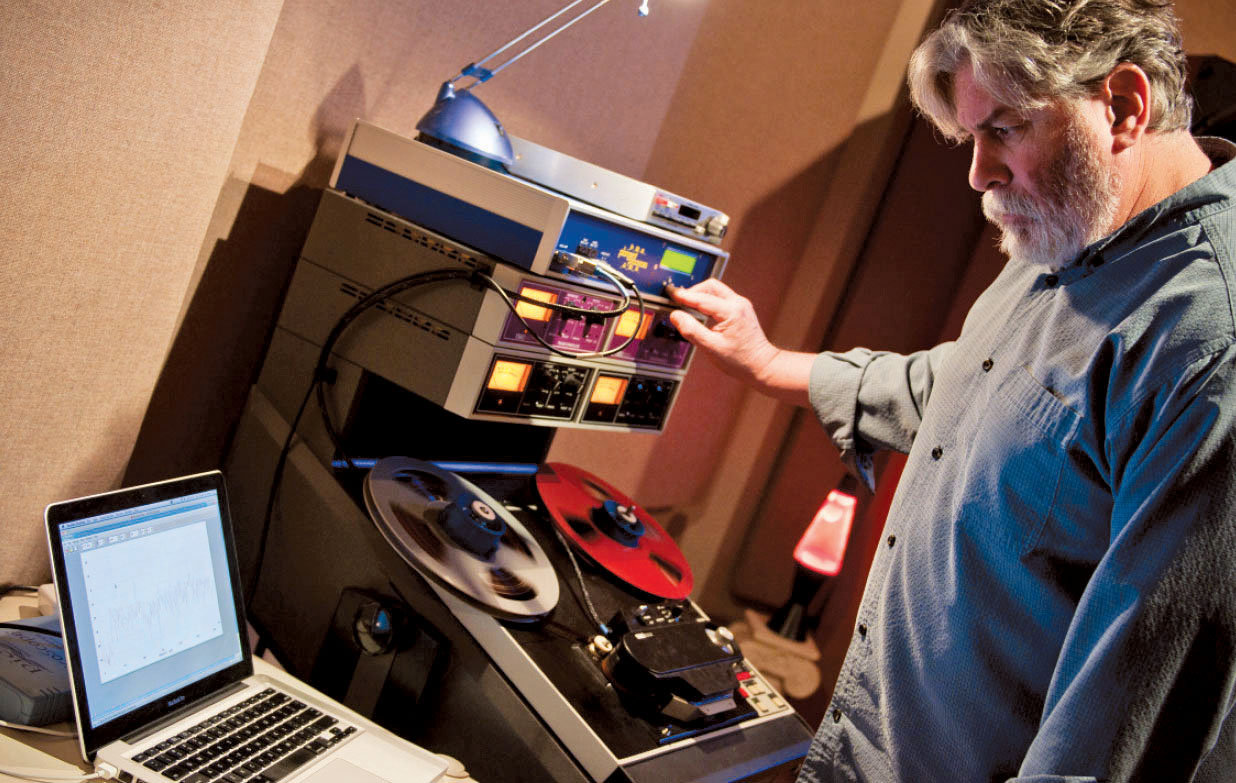Interview by Bruce Kaphan
I asked one of my favorite mastering engineers, two-time Grammy® winner David Glasser of Airshow Mastering, for his advice on your expectations for a mastering session and on how to prepare your tracks.—BK
David, thanks for sharing your knowledge with our readers. A lot of my clients ask me why they should bother mastering.
David Glasser: Since it’s entirely possible to release a CD or download that has not been formally ‘mastered’, why go to the trouble and expense? Because it’s all too easy to lose sight of the forest for the trees; someone with fresh ears is often helpful.
A good mastering engineer who regularly works on many projects can put the project in perspective, and make useful adjustments and changes that you may not have considered. Remember that the goal of mastering is to present the music in the most favorable light.
On Mastering
In terms of preparing for mastering, what recommendations do you make to your clients?
Know what you want to achieve in the mastering session: Do you want little more than a faithful transfer of your mixes? Are there specific concerns you want addressed? Do you want to give the mastering engineer free rein to take the mixes in an unexpected direction?
Many engineers routinely provide reference mixes that have been peak-limited or compressed in order to emulate what the level should be after mastering. Provide these reference mixes to the mastering engineer, along with the non-limited files. High-resolution sessions and files—88.2 kHz sample rate and higher—will usually sound better than lower-resolution files. All digital mixes should be 24-bit. Consider other high-resolution mix media, including analog (on a well-maintained and aligned machine) and DSD.
Do you have any suggestions for how to best make sure your clients will have the best opportunity for taking full advantage of the mastering process?
Involve the mastering engineer early in the mixing process so you can bounce ideas off each other. Inevitably this results in a better recording and a better final master. Try to make certain decisions prior to the mastering session; not just because you will save time and money, but because you can then focus on the things that you have engaged the mastering for.
Song sequence, spacing and segues can be decided before the mastering session; if you have multiple mixes of in the long path toward creating an album. Can you give the readers a quick checklist of the mastering process?
Most mastering sessions include the following steps:
- Discussing the project with the client
- Listening and evaluating the mixes
- Processing the mixes to achieve the desired sonic result
- Editing the material into the final order
- Entering metadata such as CD-Text and ISRC
- Creating reference copies for client evaluation—and, upon approval,
- Creating the final quality-checked master(s).
This task list applies regardless of the release medium: download-only releases deserve the same attention as physical CDs or DVDs.
You made reference to some technical terms that many have never heard of, terms like metadata, CD text and ISRC codes. Where can our readers go to learn more?
There’s actually a document on our website that explains all of these terms in great detail: Cover Your (Data) Bases. It’s a massively modified and updated version of the article “The Last Word” that our Ann Blonston wrote for Recording many years back (June 2006), and is probably more than anyone really needs to know.
Thanks, David!
David can be reached at www.airshowmastering.com.
(SIDE BAR) Mastering the Artwork
One bit of advice I give my clients that almost always falls on deaf ears has to do with the preparation of album artwork. I don’t care if you do your own artwork or you hire someone else to do it. Just like recording itself, it’s almost definitely going to take longer than you think, so get on it early! If you want to maximize your album’s chances for returning the investment you’ve made in it, here’s a suggested checklist for information to include in your album artwork.—BK
jacket front panel:
- title
- artist
rear panel:
- title
- artist
- UPC code
- record company address includ-ing mail and web addresses
- circle P, date, record compa-ny name, “All Rights Reserved”
- country of manufacture
- record company logo
- track list
- track times
inner panels:
credits, including:
- producer(s)
- engineer(s)
- mastering engineer(s)
- performer(s)
- studio(s)
- graphic designer(s)
- photographer(s)
- composer(s)/lyricist(s)
- publishing information, including ©, year, publishing compa-ny name, PRO (performing rights organization affiliation)
spine:
- title
- artist
- record company name
- record company catalog number
on the disc itself:
- title
- circle P, date, record compa-ny name, “All Rights Reserved”
- country of manufacture
- “unauthorized duplication is a violation of applicable laws”



